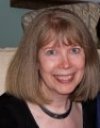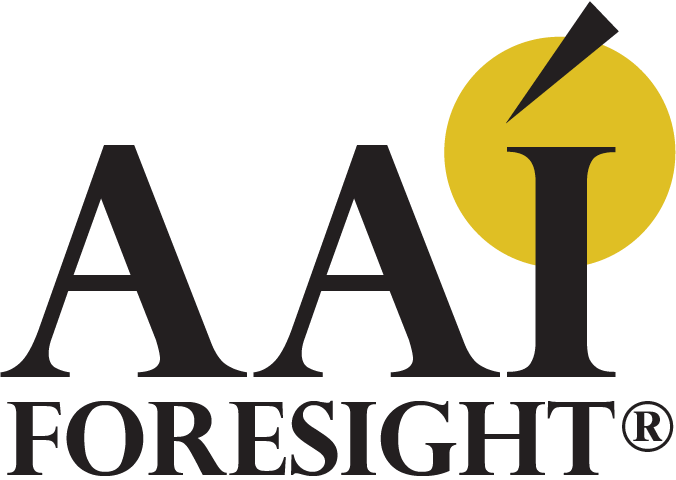
Cindy Wagner
Submitted by Cindy Wagner on
Upon his retirement after a nearly 40-year career in futures research and analysis, Bob Olson agreed to an “exit interview” with Foresight Signals. Olson’s career as a futurist began in 1979 as a project director with the Congressional Office of Technology Assessment (OTA). He was a founding member of the Institute for Alternative Futures’ board of directors, where he was director of research from 1990 to 2003 and senior fellow until his retirement this year.
Foresight Signals: The future is a very broad subject to study. How did you prepare yourself to become a “futurist”?
Bob Olson: I went to graduate school at the University of Michigan in the late 1960s to early 1970s and encountered a number of brilliant people there who were thinking seriously about the future. By studying and working with them, I was able to create what amounted to a curriculum in futures studies. All of those people were gone within a few years after I graduated, either retiring or moving to other universities, so it was my great good fortune to be there at exactly the right time.
Who have been the biggest influences in your career?
My initial encounter at Michigan was with the economist Kenneth Boulding. I took his course on systems theory and was deeply impressed by his recently published essay “The Economics of the Coming Spaceship Earth,” a founding statement of what came to be called Ecological Economics. Later, I met his wife, Elise Boulding, who was learning Dutch in order to translate Fred Polak’s early classic of futures studies, The Image of the Future.
Boulding connected me to biophysicist John Platt, who became my main mentor. John taught no classes, but we got together frequently for conversations. He was a member of the Club of Rome and brought me into contact with the work underway at MIT that led to The Limits to Growth. I also learned a great deal from Don Michael, another Club of Rome member. I took his social psychology course on technological change and long-range planning and then worked for two years as his research assistant as he wrote On Learning to Plan—and Planning to Learn.
Platt introduced me to the work of Willis Harman at SRI International. As I graduated, Harman hired me to work at his group’s new Washington office, but contracts to support the office fell through. I kept closely following the work of Harman and his SRI colleagues, but rather than going to Washington I became a faculty member in an experimental program at the University of Illinois, where I taught courses on futures studies for three years.
Finally I did move to the Washington area and met Clem Bezold, who was just starting the Institute for Alternative Futures (IAF). I worked for free for several months, helping Clem get the Institute off the ground, and I became one of its founding board members, along with Jim Dator and Alvin Toffler. Clem—and later Jonathan Peck—became my close colleagues over the following decades.
What foresight techniques have been most valuable in your work?
Horizon scanning, scenarios, and visioning are the techniques I’ve used the most. Scenarios that embrace a broad range of plausible future conditions are better than most other futures methods for dealing with uncertainty, and visioning the preferred future is important for deciding what to do. IAF has been almost unique among futures groups in its emphasis on aspirational futures, and I very much identify with this approach—helping people clarify their aspirations for the future of their organizations and the future of the larger society, and then thinking about how to move toward those preferred futures.
How have you explained the nature of your foresight work and approach to clients or to the public?
The most common misunderstanding we’ve encountered among clients is when they expect that we can help them “predict the future” so they can better plan for it. We explain why we believe it’s dangerous to do planning based on any single prediction of what the future will be like because, as Jim Dator puts it, there is no “the future” but rather a vast range of possible alternative futures. Myriad uncertainties, unknowns, “wild cards,” and people striving to shape the future in different directions make it unwise to bet on any single prediction. Then we explain our methods, highlighting the many things you can do with scenarios and the importance of clarifying aspirations for the preferred future.
In your work with OTA, what technologies did you see as having the most potential impact at the time? What technologies had more (or less) impact than you anticipated?
I was in the Energy Group at OTA and again had the good fortune of perfect timing: I was there for a “golden era” of studies on energy efficiency and solar energy. Our studies concluded there is a huge potential for “doing more with less energy” and saving money in the process, and this has proven correct. Our study of photovoltaics was more bullish than other studies at the time, but we didn’t anticipate that PV would actually become cheaper than coal, as is happening now. Hazel Henderson, who had introduced me to Clem Bezold, recruited me to work on an OTA study, Technology for Local Development, that looked at a number of community-scale technologies. We thought most of them would become widely adopted. Some have, like green architecture and farmers markets. Others less so, like integrated small farm systems and biological wastewater treatment systems.
What impact have you seen/do you expect from developing technologies, such as artificial intelligence, virtual reality, and augmented reality?
I think AI will eventually have huge impacts. Many will be positive, such as increasing energy and resource efficiency, optimizing industrial processes to avoid pollution, and dramatically improving health care. AI impacts on employment will require major efforts to retrain people for new jobs, implement some form of non-job income provision, and systematically promote the full range of worthwhile activities apart from work that give meaning and purpose to people’s lives. The transition could be highly disruptive if these things aren’t done. AI will have other serious impacts, as we are seeing already with the “surveillance state” being created in China and, coming soon, the ability to create incriminating video images of people that are indistinguishable from the real thing.
Another technology I expect to have huge impacts is synthetic biology. I think it will eventually rival information technology as a basis for technological change throughout the economy.
The “wild-card technology” I hope for is small-scale fusion. There are over a dozen companies, such as Lockheed Martin,Helion Energy, Tri-Alpha Energy, and LPP, working on approaches to “microfusion” that could come faster and be far less expensive than huge Tokamaks. Both Arthur C. Clarke and Isaac Asimov had microfusion as the energy source of the future in their stories, so with such illustrious support, I figure it’s a good bet.
Are there differences in the work that futurists do for the public sector versus the private sector?
At IAF we use mostly the same approaches with public, private, and voluntary organizations, although in our private sector work we are more likely to add in conventional approaches like SWOT [strengths, weaknesses, opportunities, and threats] analysis.
How have you seen foresight change during your career?
There was a period in the 1970s when foresight became increasingly common and sophisticated in the public sector as well as corporations. Then the ascendancy of market fundamentalism increasingly undercut the very idea that foresight and planning are needed. Foresight never went away, but it became less common and more dependent on the support of key individuals in organizations rather than being institutionalized.
Where do you see it going in the next decade?
Foresight has recently been making a revival in the U.S. federal government, mostly below the radar, driven by need and supported by the creation of intergovernmental networks like the Federal Foresight Community of Interest. I’m hopeful this trend will continue.
How do you measure your work's success?
The most easily visible evidence is change in the outlooks, goals, and efforts of the people we work with, though it’s hard to assess how influential their efforts will be over time. We sometimes come back to clients a year or two later to see what changes they believe came from our work, but these reviews have not been systematic. Sometimes, with a private-sector client, we can see the financial value of our work. One time, in doing that, a client said to me, “Oh, didn’t I tell you, the project saved the company over a billion dollars.” We clearly didn’t charge them enough.
What advice would you give to anyone entering the futurist/foresight profession?
Same as any other profession: Get the best training you can and study the approaches of the best people in the field. Try to work with people you can learn from and who really believe in what they are doing. If an academic, tie into a strong existing program or at least a very senior person or two who will support you, since disciplines tend to push back against interdisciplinary activity.
If you’re doing consulting, strive for a balance between marketing and carrying out projects. I disliked marketing and being the “front man,” preferring to focus as much as possible on simply doing the fascinating work I enjoyed. I was lucky that my colleagues were sometimes willing to carry more of the marketing load. I would urge anyone entering the field to avoid just-for-the-money “junk work.” Trust that if you do work you believe in, work hard to find clients who want that kind of work, and do good work for them, getting business will become easier over time.
What’s next for you?
Writing a book. I don’t have a title, but the basic concept is something like this:
- The present is much better than most people think it is.
- But due to neglect, avoidance, and political dysfunction, there are serious negative developments that cannot be avoided during the decades just ahead. Without bold action, the longer-term future could become much worse than most people assume is possible.
- There are also positive possibilities that go beyond what most people have dared to imagine.
- The best motivation for the efforts we need is to simultaneously be deeply alarmed by the dangers ahead and profoundly inspired by compelling visions of the better futures that could be.
Robert Olson may be reached at bobolson2020@gmail.com. This interview was conducted via e-mail by Cindy Wagner, editor of Foresight Signals, and Tim Mack, managing principal of AAI Foresight Inc.
